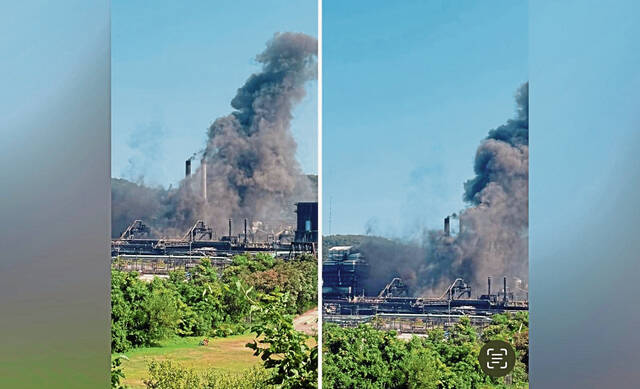https://triblive.com/local/preliminary-report-pinpoints-location-of-deadly-clairton-coke-works-blast/
Preliminary report pinpoints location of deadly Clairton Coke Works blast

A new, independent investigation into a deadly explosion at the U.S. Steel Clairton Coke Works facility in August had similar findings to an earlier study done by an independent federal agency.
Engineering Design and Testing Corp., retained by U.S. Steel, released preliminary findings this week that found the explosion took place in the 13-14 Coke Battery transfer area while U.S. Steel employees and employees of MPW Industrial Services were opening and closing the valve to prepare for planned maintenance.
U.S. Steel employees Timothy Quinn, 39 and Steven Menefee, 52, were killed as a result of the explosion. Eleven others were injured.
The U.S. Chemical Safety and Hazard Investigation Board (CSB), an independent, nonregulatory federal agency, also pinpointed the 13-14 Coke Battery transfer area as the location of the explosion.
The CSB’s report also indicated a gas monitor alarm was triggered and employees were ordered to evacuate before the explosion. That wasn’t detailed in EDT’s report.
EDT’s report said the explosion took place when an 18-inch cast iron valve ruptured, releasing flammable coke oven gas which subsequently exploded.
The valve was manufactured in 1953 and refurbished about 10 years ago, according to EDT.
Another valve that was leaking in June was temporarily repaired in June, according to CSB’s report.
In addition, four of nine recovered valves inspected after the explosion were damaged. CSB was not able to say if the damage was a result of the explosion. EDT’s report found the damage to other valves was a result of the explosion.
As part of the valve opening-and-closing process, water entered into the valve in order to flush deposits, EDT’s report said. A sealed cavity inside the body of the valve filled with high-pressure flush water higher than the pressure rating of the valve.
“This resulted in a sudden and complete rupture of the valve body, released combustible coke oven gas,” EDT’s report said. “The coke oven gas accumulated in the transfer area basement and exploded when it reached an ignition source at the adjacent 14 Battery.”
EDT reviewed U.S. Steel procedures for maintaining Clairton’s valves. Previously, low pressure steam — less than 10 psi — had been used to clean the valves. U.S. Steel did not have a specific procedure for the use of high-pressure water to flush valves, EDT’s report found.
The company did have an established Management of Change procedure that should have been used to evaluate the change from low pressure steam to high pressure water, the report said.
“These initial findings are consistent with our own, and we remain committed to working closely with all parties involved in investigations — including the Chemical Safety Board, OSHA, and EDT — to ensure a comprehensive understanding of the event,” U.S. Steel said in a statement.
U.S. Steel said it heightened its safety protocols as it continues to review the incident. Those measures include prohibiting the use of high pressure water for valve cleaning and making its guidelines more detailed.
“Employees will be trained on any program or procedure changes that are implemented,” U.S. Steel’s statement read. “Throughout this process, our top priority continues to be the safety and well-being of our employees, their families, and our communities. Safety first will always be our core value.”
EDT — as well as the CSB’s — reports are preliminary. They both are continuing their investigations.
Copyright ©2025— Trib Total Media, LLC (TribLIVE.com)
